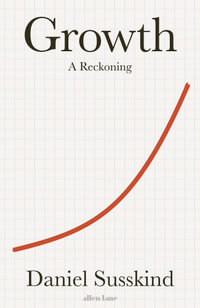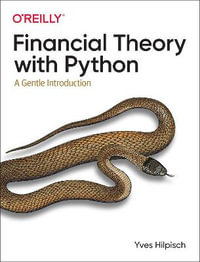| Preface | p. x |
| Conventions, Definitions, and Symbols | p. xii |
| Introduction | |
| The Questions | p. 3 |
| Question 1: the attribution problem | p. 3 |
| Environmental problems: originator versus instigator | p. 3 |
| Formulation of the attribution problem | p. 4 |
| Some historical notes on the attribution problem | p. 5 |
| Question 2: the position problem | p. 7 |
| Tools for environmental analysis and decision-support: a small anthology | p. 7 |
| Formulation of the position problem | p. 9 |
| Some historical notes on the position problem | p. 10 |
| The two-fold answer: unification | p. 11 |
| Towards a unification of tools | p. 11 |
| A unified framework | p. 13 |
| A unified methodology | p. 16 |
| The central question | p. 18 |
| The Scientific Context | p. 19 |
| The epistemological foundation | p. 19 |
| Failure of the experimental method | p. 19 |
| Towards an alternative epistemology | p. 22 |
| Excursus: the epistemology of interpolations | p. 28 |
| The question of truth | p. 31 |
| Interdisciplinarity | p. 34 |
| Environmental science, systems analysis, and thermodynamics | p. 34 |
| The role of economics | p. 39 |
| The role of ecology | p. 46 |
| The role of mathematics | p. 47 |
| A theoretical physicist's apology | p. 49 |
| Outlook | p. 51 |
| Economic systems | p. 51 |
| The environment | p. 51 |
| The plays | p. 52 |
| Economic Systems | |
| Introduction to Part Two | p. 55 |
| Some shortcomings of traditional economic theory | p. 55 |
| Structure of Part Two | p. 58 |
| Economic Processes | p. 60 |
| Representation of an economic process: the production function | p. 60 |
| What is an economic process? | p. 60 |
| Reformulation of the production function: economic and environmental commodities | p. 63 |
| Processes and commodities: a note on terminology | p. 70 |
| The materials and energy balance | p. 72 |
| The labelling of processes and commodities | p. 74 |
| The assumption of linearity of economic processes | p. 77 |
| The duration of a process | p. 77 |
| Co-transformation of undesired flows | p. 79 |
| The nature of the process data | p. 80 |
| The assumption of fixed technical coefficients | p. 82 |
| Clusters of economic processes | p. 84 |
| Representation of a process cluster | p. 84 |
| The crossroad: commodity-flow accounting and activity-level analysis | p. 86 |
| System boundaries: which processes to include? | p. 90 |
| The attribution of environmental interventions to a given external demand | p. 91 |
| The first fundamental equation | p. 91 |
| A simple numerical example | p. 95 |
| On Solving the First Fundamental Equation | p. 97 |
| Does the first fundamental equation necessarily have solutions? | p. 97 |
| The assumption of squareness of the technology matrix | p. 97 |
| Process accounts and commodity accounts | p. 98 |
| Excursus: the relation with economic input-output analysis | p. 104 |
| Excursus: the relation with economic make/use analysis | p. 108 |
| Excursus: the relation with economic equilibrium analysis | p. 113 |
| Are the technology matrix square and the first fundamental equation solvable? | p. 114 |
| Solution of the first fundamental equation | p. 127 |
| Making a square technology matrix: the allocation procedure | p. 127 |
| The allocation procedure in detail | p. 132 |
| Towards Concrete Tools for Environmental Analysis and Decision-Support: Inventory Analysis | p. 136 |
| General considerations | p. 136 |
| Derivation of life-cycle assessment | p. 140 |
| Derivation of substance-flow analysis | p. 150 |
| The relation with environmental impact assessment | p. 170 |
| The relation with risk assessment | p. 174 |
| The Environment | |
| Introduction to Part Three | p. 179 |
| From environmental commodities to the environmental problem | p. 179 |
| Structure of Part Three | p. 181 |
| Environmental Processes | p. 183 |
| Representation of an environmental process | p. 183 |
| What is an environmental process? | p. 183 |
| Analytical description of environmental processes | p. 189 |
| The nature of the process data | p. 196 |
| Clusters of environmental processes | p. 197 |
| The time-integrated presence or absence of environmental commodities: transient stressors | p. 197 |
| Using the fate matrix to calculate the time-integrated presence or absence | p. 202 |
| The permanent presence or absence of commodities: permanent stressors | p. 204 |
| Using the fate matrix to calculate the permanent presence or absence | p. 209 |
| Combined consideration of the fate of environmental commodities: stressors | p. 211 |
| The second fundamental equation | p. 213 |
| The assumption of linearity of environmental processes and the connection with the epistemological basis | p. 215 |
| Is the fate matrix square? | p. 217 |
| Environmental Impacts | p. 219 |
| Representation of an environmental impact | p. 219 |
| What is an environmental impact? | p. 219 |
| A measure for environmental impacts | p. 225 |
| The third fundamental equation | p. 231 |
| The nature of the impact factors | p. 233 |
| The Environmental Problem | p. 238 |
| Representation of the environmental problem | p. 238 |
| What is the environmental problem? | p. 238 |
| A measure for the environmental problem | p. 240 |
| The fourth fundamental equation | p. 241 |
| The nature of the problem factors | p. 242 |
| Towards Concrete Tools for Environmental Analysis and Decision-Support: Impact Analysis | p. 244 |
| General considerations | p. 244 |
| Derivation of life-cycle assessment | p. 248 |
| Derivation of substance-flow analysis | p. 252 |
| The relation with environmental impact assessment and risk assessment | p. 254 |
| Conclusion | |
| The Answers | p. 259 |
| Answer 1: the attribution problem | p. 259 |
| Introduction | p. 259 |
| A product from the cradle to the grave: life-cycle assessment | p. 263 |
| A substance in a region: substance-flow analysis | p. 264 |
| A factory: environmental impact assessment | p. 266 |
| Releases of a chemical: risk assessment | p. 267 |
| Discussion | p. 267 |
| Answer 2: the position problem | p. 268 |
| Further Reflections | p. 272 |
| The limits of attribution | p. 272 |
| Attribution versus planning analysis | p. 272 |
| Attribution versus scenario analysis | p. 274 |
| Attribution versus improvement analysis | p. 276 |
| Attribution versus origins analysis | p. 278 |
| The meaning of attribution for environmental analysis and decision-support | p. 280 |
| Final remarks | p. 282 |
| Process and the state of the environment | p. 282 |
| Is there no truth in environmental science? | p. 285 |
| A role within environmental philosophy | p. 287 |
| Post scriptum | p. 288 |
| Summary of Findings | p. 290 |
| References | p. 293 |
| Subject Index | p. 314 |
| Table of Contents provided by Syndetics. All Rights Reserved. |
























